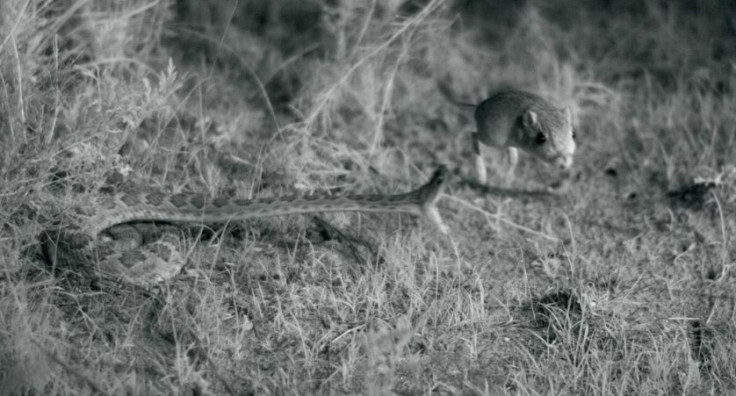High-speed viper strike caught on camera at 500 frames per second
Scientists show how rattlesnakes and kangaroo rats have evolved attack and evade techniques.
A slow-motion viper's strike has been captured on camera in high-speed, providing an insight into the hunting technique of snakes in the wild. Scientists from the University of California, Riverside, filmed a rattlesnake striking at a kangaroo rat at a rate of 500 frames per second.
Biologists from the University of California, Riverside were looking at predator/prey relationships, examining what factors are involved in the success or failure of a rattlesnake strike. Relationships between predators and prey are of huge interest to evolutionary biologists because they can lead to extreme adaptations in both species – such as the Chamaeleon's tongue or a cheetah's sprint.
Timothy Higham and colleagues focused on the relationship between the rattlesnake and the kangaroo rat in New Mexico. They were observing them in the wild – something that in the past has been extremely difficult.
"Predator-prey interactions are naturally variable - much more so than we would ever observe in a controlled laboratory setting," Higham said. "Technology is now allowing us to understand what defines successful capture and evasion under natural conditions. It is under these conditions in which the predator and prey evolve. It's therefore absolutely critical to observe animals in their natural habitat before making too many conclusions from laboratory studies alone."
Using a high-speed video, the team was able to capture strikes at 500 frames per second – the first time this has been done in the wild. "We obtained some incredible footage of Mohave rattlesnakes striking in the middle of the night, under infrared lighting, in New Mexico during the summer of 2015," Higham said. "The results are quite interesting in that strikes are very rapid and highly variable. The snakes also appear to miss quite dramatically - either because the snake simply misses or the kangaroo rat moves out of the way in time."

Their study, published in Scientific Reports, shows success or failure depends on both the accuracy of the rattlesnake, and the kangaroo rat's ability to detect and evade it before it strikes. They believe rattlesnake strikes in nature are far faster than defensive strikes observed in a laboratory.
Furthermore, they found kangaroo rats might be able to increase their power when under attack through a process called elastic energy storage – where the muscle stretches a tendon then relaxes, making the tendon recoil. "It's equivalent to a sling shot - you can pull the sling shot slowly and it can be released very quickly. The kangaroo rat is likely using the tendons in its lower leg - similar to our Achilles tendon - to store energy and release it quickly, allowing it to jump quickly and evade the strike."
Researchers now plan to study other species of rattlesnake and kangaroo rats to see if there are differences in other animal species.
© Copyright IBTimes 2025. All rights reserved.






















